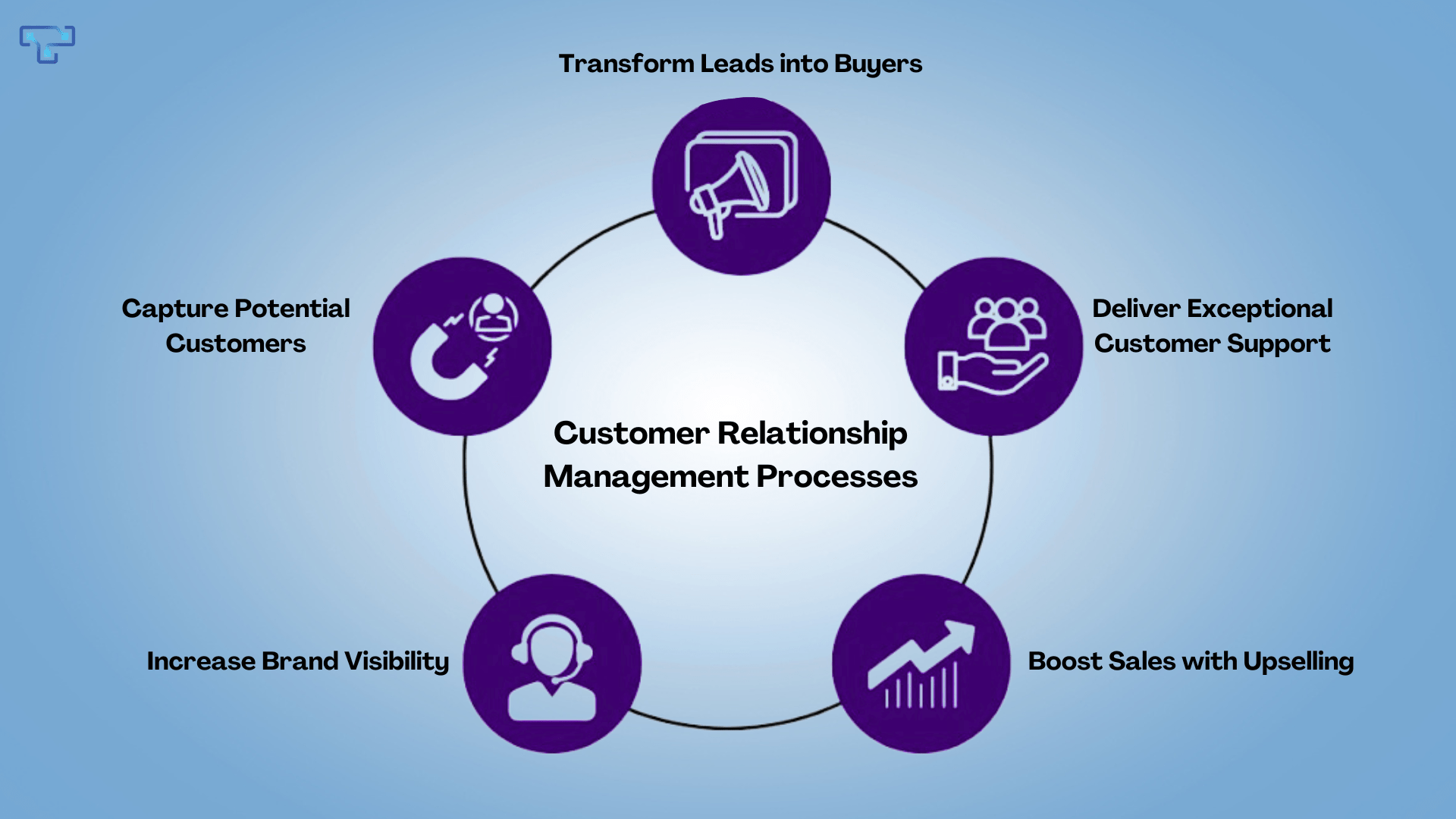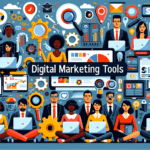Customer Relationship Management (CRM) processes are essential strategies for creating personalized and meaningful interactions with customers. These processes are designed to streamline and enhance the way businesses engage with their customers, ultimately converting leads into loyal clients. At the heart of these strategies lies a robust CRM system, which provides the data and functionalities needed to execute these steps effectively. This blog will delve into the CRM process, its cycle, and the five key steps involved in managing customer relationships.
The CRM Process Cycle
To grasp the steps of the CRM process, it’s crucial to understand the customer lifecycle. This lifecycle encompasses the journey of a person becoming a loyal customer. The CRM cycle involves marketing, customer service, and sales activities, starting with outreach and customer acquisition and ideally leading to customer loyalty. The five key stages in the CRM cycle are:
- Reaching a Potential Customer: This involves marketing efforts aimed at introducing the brand to potential customers.
- Customer Acquisition: This stage focuses on attracting and acquiring new customers.
- Conversion: Converting leads into paying customers.
- Customer Retention: Maintaining relationships with existing customers to ensure they continue doing business with the company.
- Customer Loyalty: Building long-term relationships that result in repeat business and brand advocacy.
The CRM process brings this lifecycle to life through tangible steps that help drive consumers from learning about the brand to becoming repeat customers.
The Five Steps in the CRM Process
The CRM process involves a collaborative effort between marketing, sales, and support departments. Here are the five steps in detail:
1. Increase Brand Visibility
The first step in acquiring new customers is to introduce them to your business. The marketing team typically undertakes this task through various measures:
- Learning About Your Target Audience: Marketers conduct research to identify their audience’s demographics, interests, preferred communication channels, messaging preferences, and concerns.
- Segmenting Your Target Audience: Audience personas are created to segment the target audience into groups based on similar interests or demographics, helping marketers identify which groups are most likely to become customers.
- Creating Targeted Marketing Campaigns: Using A/B tests and marketing automation, marketers develop campaigns tailored to specific customer segments, utilizing platforms like social media and email to acquire leads.
A CRM solution can provide valuable insights into past leads and customers, helping marketing teams understand their target audience better. By analyzing sales notes and identifying patterns, marketers can create effective campaigns that resonate with potential customers.
2. Capture Potential Customers
Introducing your brand to potential customers is just the beginning. The next step is to encourage them to learn more about your business and engage with it. Lead acquisition can be a responsibility of either the marketing or sales team, or both:
- Marketing Initiatives: This can include encouraging website visitors to sign up for newsletters or participate in social media giveaways.
- Sales Efforts: Sales teams can use CRM systems to set up live chat on the website, proactively reaching out to potential customers.
With lead enrichment tools like Reach, acquiring leads becomes significantly simpler. These tools can provide detailed information about a lead with just an email address, allowing for personalized outreach and saving time on research.
3. Transform Leads into Buyers
Once leads are engaged, the goal is to turn them into paying customers. Sales reps play a crucial role in this step:
- Identifying Interested Leads: Using CRM systems, sales reps can analyze historical data to identify lead-qualification criteria and prioritize leads with the highest probability of making a purchase.
- Nurturing Leads: Reps can send case studies, white papers, and other resources to build trust and sway leads towards making a purchase. CRM platforms also help reps set reminders and tasks to follow up with interested leads, ensuring no opportunities are missed.
4. Deliver Exceptional Customer Support
Converting a lead into a customer is a significant milestone, but the CRM process doesn’t end there. Retaining customers through excellent service is essential for long-term success:
- Quick Issue Resolution: CRM tools provide support agents with historical customer information, enabling them to resolve issues quickly and efficiently.
- Omnichannel Support: Customers expect to reach out through their preferred channels. CRM features allow support agents to manage conversations across multiple channels in a unified view, providing a seamless experience.
According to Zendesk’s 2020 Customer Experience Trends Report, customer service is a critical factor in determining brand loyalty. Superior support can enhance customer satisfaction and loyalty, while poor service can lead to customer churn and a damaged reputation.
5. Boost Sales with Upselling
Returning customers not only bring repeat business but also present opportunities for upselling:
- Personalized Recommendations: Using CRM systems, businesses can organize customers into smart lists based on similar purchase histories. Custom email templates can then be used to send relevant product releases or promotional deals to these customers.
- Check-in Calls: For service-based businesses, regular check-in calls can identify upsell opportunities. By reaching out to repeat customers and understanding their evolving needs, businesses can offer upgraded or additional services.
Enhancing the CRM Process with Technology
Modern CRM systems offer a range of tools and features that enhance the CRM process, making it more efficient and effective. Some of these features include:
- Data Analytics: CRM platforms can analyze customer data to provide insights into customer behavior, preferences, and trends, helping businesses make informed decisions.
- Automation: Automating repetitive tasks such as email campaigns, follow-up reminders, and lead scoring can save time and ensure consistency in customer interactions.
- Integration: CRM systems can integrate with other business tools such as marketing automation platforms, social media, and e-commerce systems, providing a comprehensive view of customer interactions.
Sum Up
The CRM process is a critical component of modern business strategies, enabling companies to build and maintain strong customer relationships. By understanding the customer lifecycle and implementing the five key steps—generating brand awareness, acquiring leads, converting leads into customers, providing superior customer service, and driving upsells—businesses can create meaningful and personalized interactions with their customers. Leveraging CRM technology further enhances these processes, leading to improved customer satisfaction, loyalty, and ultimately, business growth.




